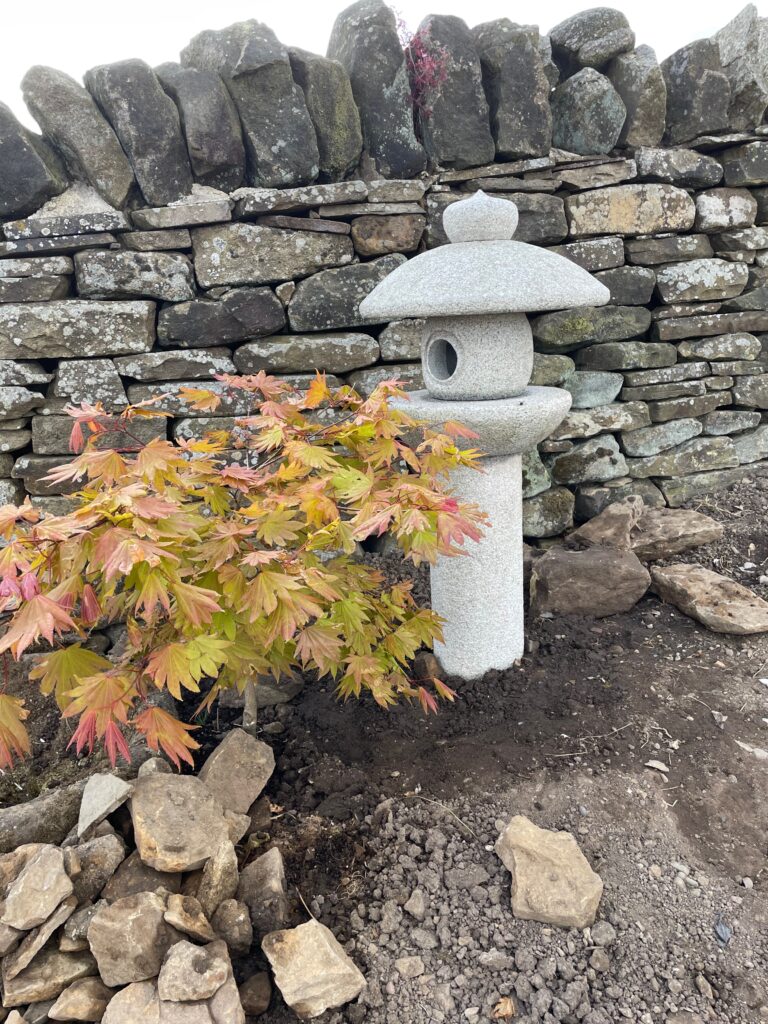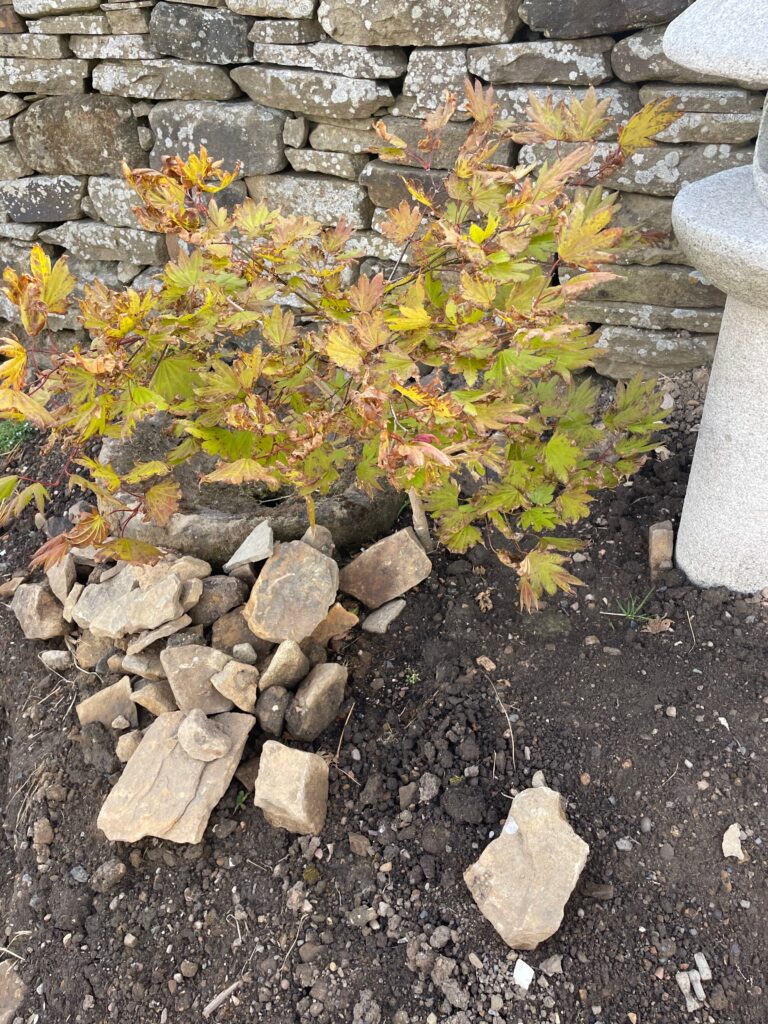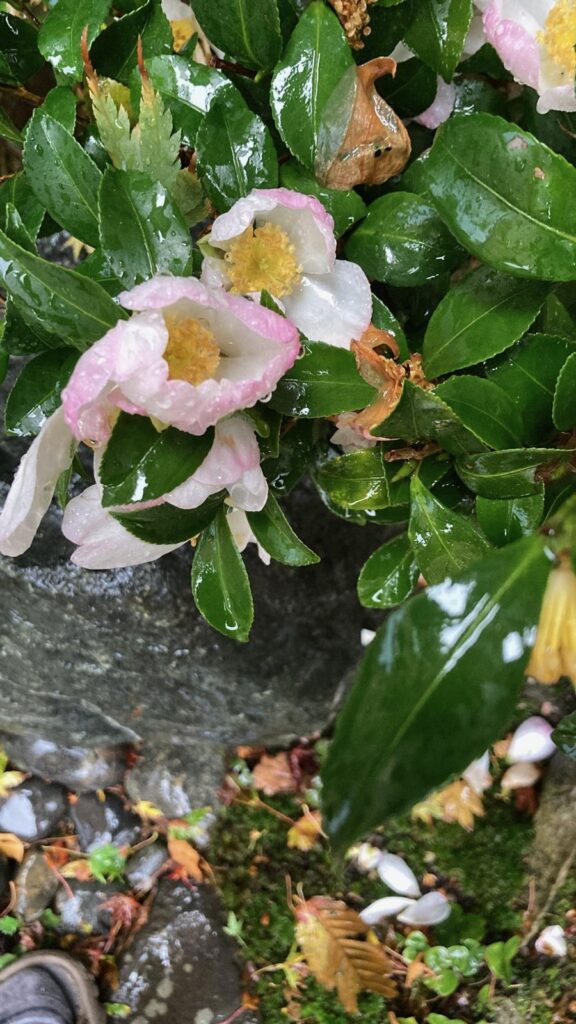
I start to plant a gardenThe summer of 2022 was not the best of times for planting. In June the moor was beleaguered by a cold desiccating east wind of nearly three weeks. It was followed by a July and August with hot dry temperatures also accompanied by drying winds.
I had three motivations.
First, I had some plants in pots that had come form my garden in Anglesey.
Secondly, I always believed Vita Sackville-West’s advice (based on her own mistakes) – to get your structural plants in early -perennial plants etc can establish much more quickly, and if I am honest, in my advancing years I needed time to enjoy them.
Also I sowed some packets of annual meadow seeds as a test for the eventual (not Japanese) perennial meadow at the top of the slope.
The move from Anglesey was not quite a snap decision, but it wasn’t an idea we brooded over for some time. I was still spending money on developing my Anglesey garden. Some recent acquisitions or that garden had hardly a season in the ground and could easily be transported – some were also grown in containers in the first place. As we needed two removal vans anyway deciding to pot some up to move was possible without denuding the mature elements of the garden.
These included: some dwarf evergreen small leaved azalea; an Enkianthus companulatus, an autumn flowering Camellia sasquana, an oak leaved Hydrangea all of which were to enhance the Roji nature of the Anglesey garden.
I had also brought 3 varieties of Acer shirasawanum.
I also had a 2.2m Pinus thunbergii which had been in the ground for about 18 months, a Pinus sylvestris “Chantry Blue” that had been in a pot for some years and was used for my experiments in niwaki , a Juniper dauvarica expansa that had had training from Silktree nursery and a dwarf Pinus parvifolia with its leading shoot trained horizontally . These would be very expensive to replace and there was no guarantee that the new owner would have any idea what to do with them.
All of these were transported in pots, survived two winters and a summer in their containers.
So what has survived planting?
Conifers have come through unscathed and seem happy in the environment- the juniper and Pinus paviflora are still in their pots and need pruning to restore some shape. The evergreen azaleas and the camellia have had no problems. It has been the plants with larger and more delicate leaves that have had the problems.
I planted the acers in spots that has at least some chance of protection from the wind by putting them close to walls that were both taller than the pants and offered protection from the prevailing westerlies. They were near the bottom of the south facing slope so they were well sheltered from the northerlies. They suffered quite badly. The easterly wind scorched the leaves and the westerly drought completed the defoliation. New leaves did appear. However the question remains – do I want plants in my garden that do not look good from mid-June to August? I will give them another season and review- but I will not buy any further Acers for the garden



The Camellia Susquanna had no problems. The Enkianthus and the Hydrangea Quercifolia both defoliated but quickly recovered – they too have a temporary reprieve.

All this calls for careful consideration for new purchases. Large leaves without a glossy coat seem vulnerable. There are plenty to choose from – but they aren’t usually found in Kyoto temple gardens.